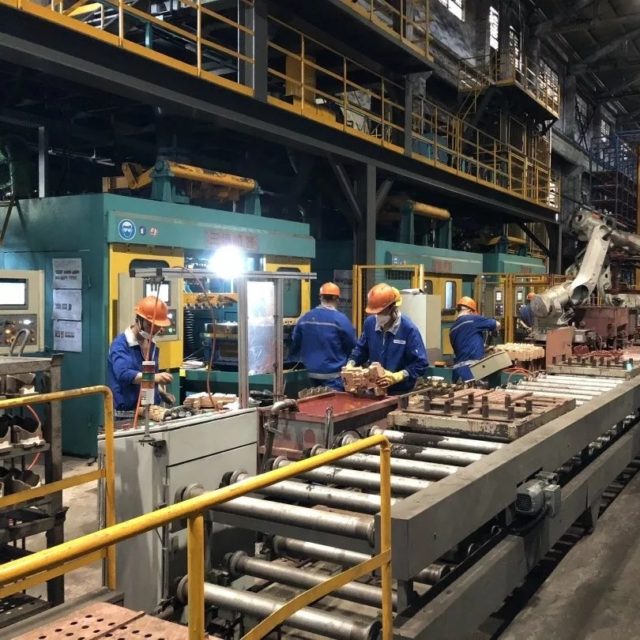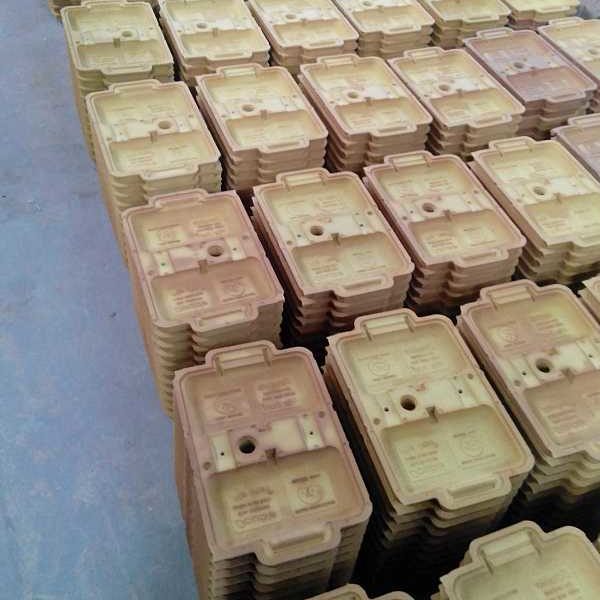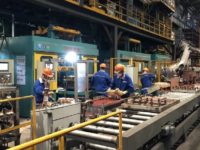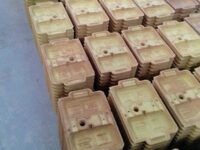In our shell moulding process two halves of a metal pattern is combined to form a full mould. The pattern can be fitted with a corebox, allowing for a hollow cavity inside the mould. The mould is formed by filling the patterns with resin-coated sand and heated so the sand grains bind together. When enough sand has bonded together and formed a shell alongside the pattern wall, the rest of the sand is poured out. The corebox is created through the same process and is inserted into the shell, before assemling the two halves to create the shell mould. Then, molten metal is poured into the shell mould and allowed to cool. The casting is then finished by breaking the shells and cleaning out the sand.
Shell moulding has a general tolerance of CT 8 – CT 10 and can be automated, which leads to low costs once the patterns have been made. Examples: cylinder heads, connecting rods, lever arms.
Advantages of shell moulding:
- Intricate and complex structures
- Soft skins and hard interiors which lead to great machining characteristics
- Ferrous and non-ferrous metals
- Thin walls and high-quality, smooth finishes that require minimal machining
CT 8 - CT 10
< 20 kg
cast iron, carbon steel, alloy steel, stainless steel, aluminum alloys, and copper alloys, nickel




